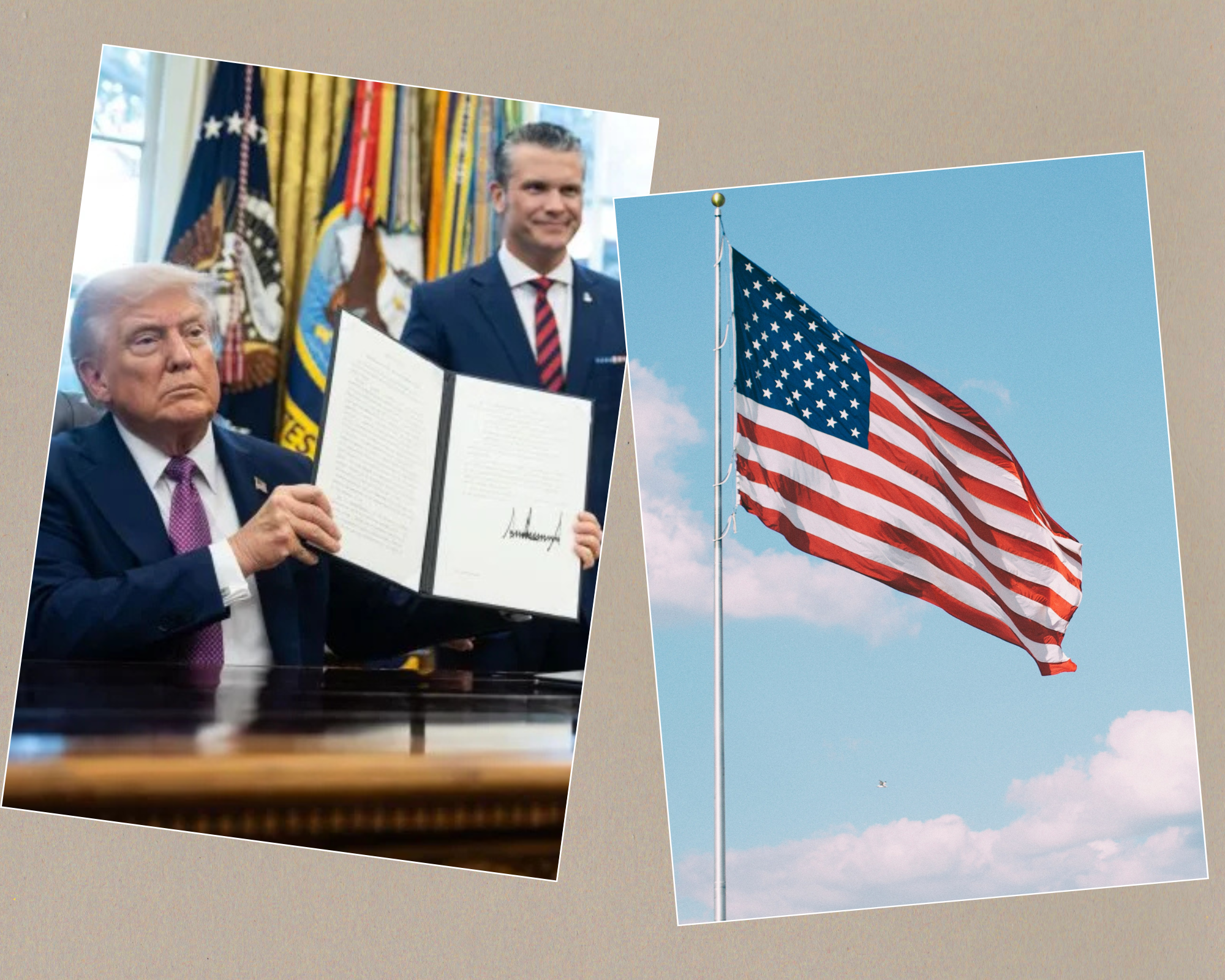During President Donald Trump’s first term in 2016, he was adamant about “ending the era of endless wars,” critiquing his predecessors, George H.W. Bush, Bill Clinton, George W. Bush and Barack Obama, who each oversaw significant military campaigns. By the time his term concluded in January 2021, Trump’s supporters, allies and children highlighted a key talking point: he was the first U.S. president since Jimmy Carter to not initiate a war.
This remained one of his strongest pitches when running in the 2020 and 2024 federal elections as he discussed the need to “clean house of all of the warmongers and America-last globalists” in his Agenda47 video uploaded to Rumble in 2023.
Fast forward to September 2025. Eight months into his second term, it seems that Trump has forgotten his own words and branding. On Sept. 5, he signed an executive order directing the Pentagon to adopt “Department of War” as a secondary title alongside its longstanding legal name, the Department of Defence.
But why conduct this ceremonial rebranding, shifting the narrative he cultivated as “America-first” and anti-war? What does this change mean and what are its implications?
Why did Trump do it?
Trump has always deeply understood the power of branding. After decades of stamping his name on skyscrapers, casinos and even steaks, he is now stamping it on the Pentagon. Instead of branding his personal businesses, he now gets to brand a nation.
According to Trump, the rebrand is about messaging. In public remarks, Trump says the rebrand sends a “message of victory,” a signal that America is stepping away from its recent route of political correctness and returning to the blunt clarity of earlier eras.
Defense Secretary Pete Hegseth echoed this sentiment during the signing of the executive order, saying the new label is about “restoring the warrior ethos” and promises the Department of War is going to “go on offense, not just defence.” He then emphasized that this rebranding is to ensure “maximum lethality… [and] violent effect” as he postulated the former name implied “tepid legality” and political correctness.
The White House framed the move as both symbolic and historical. In August 1789, after establishing America’s first official army, George Washington signed the War Department into law. It remained as such until Harry Truman signed the National Security Act in July 1947 as part of post-World War II reforms. The administration says the executive order is simply restoring tradition.
While the historical sentiment remains, critics say the timing is evidently political. Sen. Jeanne Shaheen (D-N.H.) said on MSNBC that the rebrand is “nothing more than an effort to distract from other issues that are going on in the country” — notably, a distraction from the impending legality of army strikes on an alleged Venezuelan drug boat that killed 11 people, poor handing of tensions with Iran and lack of modernization efforts to counter the increasing threats from Russia and China. The rebranding helps to shift the public conversation away from the scrutiny and instead play into Trump’s strengths: bold headlines, futile controversy and culture war resonance.
What Does the Change Actually Mean?
In practical terms, this title change means very little — at least for now. Unless Congress authorizes a permanent renaming, the Department of Defense remains the legal name of the agency. Trump’s executive order does allow for the Department of War to operate as a secondary title for official correspondence, websites and ceremonial purposes. As well, the order authorizes Pete Hegseth to use the label “Secretary of War” in official correspondence, on websites and in ceremonial introductions. Ultimately, the change is primarily cosmetic rather than practical.
While the rebranding does not have direct impact within the U.S., it will further fuel culture war politics. Some supporters see it as refreshing honesty, arguing that defence has become a mask for military overreach — from climate policy to nation building — and saying that using the word “war” may lead to stronger democratic accountability. Contrarily, the opposition fears that the change undermines civilian oversight and risks fuelling militarism. The Department of Defence oversees far more than combat — they also oversee disaster relief, cyber defence, pandemic responses and more — thus marking all of it under “war” may distort the public’s understanding of their responsibilities.
At the Pentagon, the order has caused frustration, anger and confusion, as officials have expressed to Politico, one of them saying it is “a million small headaches.” The change could cost billions in signage as training manuals, classified documents and contracts would all have to be amended. As well, hundreds of bases worldwide would require IT updates.
In the article, a former defence officer discusses how, if effective, the rebranding will have no impact on how America will conduct foreign affairs or defend its homeland. Rather, “it will be used…to portray the United States as warmongering and a threat to international stability.”
—
So, what does this amount to? The Department of Defence remains the Department of Defence in law and in practice. No new military campaigns or strategies will launch nor be altered because of the rebranding. Congress will decide whether to codify it, future presidents may reverse it and communities both within and outside the U.Swill dictate whether the term is adopted culturally.
But it is symbolic and only time will tell whether it will culminate to empty rebranding, or if it is the beginning of a deeper shift in U.S. military posture: projection, not restraint and war, not defence — at least in name.

